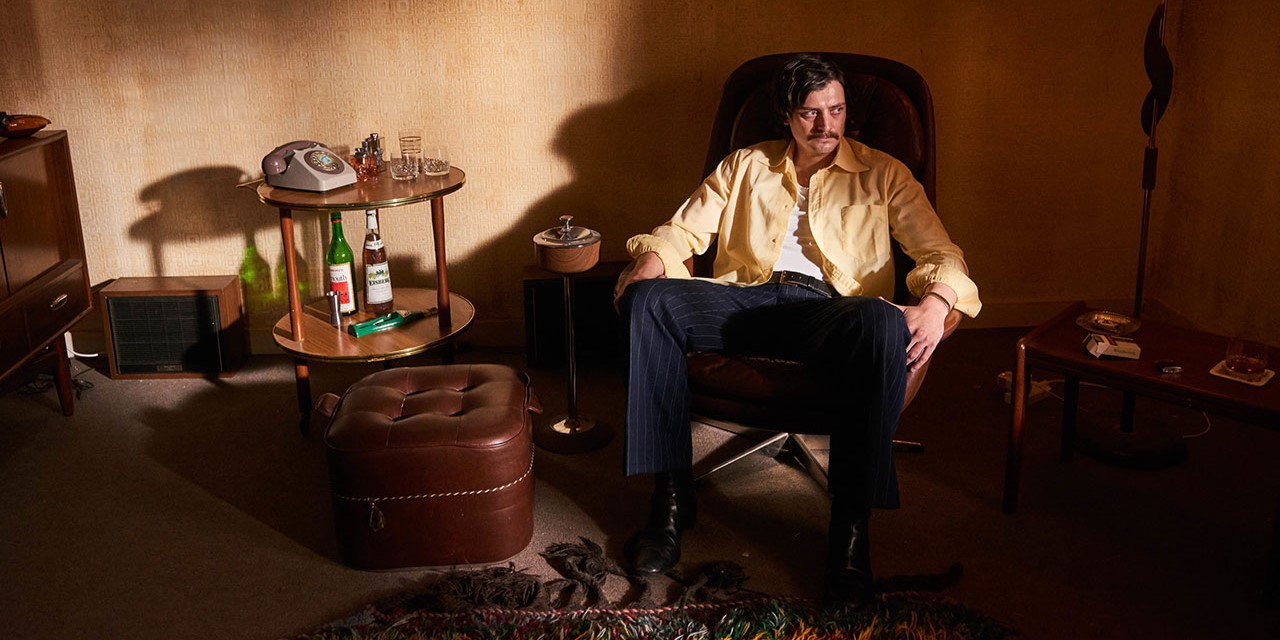‘Steeltown Murders,’ written by Ed Whitmore and directed by Marc Evans, takes us back and forth in time between a botched investigation of serial killings in 1970s Wales, and its modern-day reinvestigation with the use of DNA tracing facing its own slew of challenges. In 1973, 16-year-olds Geraldine Hughes and Pauline Floyd leave a nightclub in Swansea and are found murdered days later in Llandarcy. The Welsh police had no prior case of a serial killer in their territories before and fail to recognize the pattern matching an earlier killing, even turning down help from Scotland Yard because of national pride. The reopened case is taken up by detectives Paul Bethell and Bach Rees, who were investigators at the time of the murders but had been sidelined by their incompetent peers.
As they had suspected in the past, the pair soon find evidence of a connection between the two murders and a similar killing of 16-year-old Sandra Newton on her way home from a nightclub. Armed with advanced DNA technology, they pick up the 30-year-old cold trail once more. However, to use DNA tracing they require a large-scale swabbing program of the people who lived in the nearby areas at the time. Additional impediments are encountered with extensive budget cuts of the police force, and the regressive attitudes to the case and possible victims. As the series bounces between past ineptitudes and the present search for redemption, given the vivid portrayals of the case you might ask yourself if the BBC One show is based on real events.
Is Steeltown Murders a True Story?
‘Steeltown Murders’ is based on the tragic true case of the Saturday Night Strangler killing three young women in the community of Neath Port Talbot in South Wales. The 1973 investigation lasted a year before simmering down. The killer, Joseph Kappen, was able to dodge investigators due to a lack of technological advancements to narrow down suspects. The car he drove was identified by witnesses as a Morris 1100, but was an extremely common vehicle at the time, with 10,000 residents of the region owning one. Dubbed Operation Magnum, a grand total of 35,000 people were questioned during the initial investigation. This even included Kappen, but his car was on blocks without wheels at the time and his wife provided a fake alibi, ruling him out as a suspect in the case.

Initially, the two incidents were indeed regarded as separate, with the police fixating on a man having an affair with Sandra Newton. It was only with a DNA test in 2001 that Sandra’s killer was identified as the same person who had murdered Hughes and Floyd. Through familial DNA tracing, modern investigators would be alerted if any of the subjects in their large sample size were related to the killer, based on the DNA they had of him from the initial investigation.
With the detective team working on the ground, and the lab team sequencing thousands of profiles, they found a common suspect in Paul Kappen, a car thief. His DNA was half a match, but he had been seven years old at the time of the murders, making it likely that one of his relatives was the killer. His father, Joseph Kappen, had been a thug and delinquent himself and became the case’s primary suspect. Kappen had already died of lung cancer in 1990, yet DNA from his ex-wife and son made him out to be the primary suspect. Needing closure for the investigators and the aggrieved families, then-Home Secretary David Blunkett made the unprecedented call to exhume Kappen’s body for a DNA test.
A rainy night in May 2002 saw Kappen’s coffin being unearthed, accompanied by a clap of thunder, and it was confirmed beyond any doubt that he was the Saturday Night Strangler, and had killed all three girls. He was also suspected of committing a fourth murder in 1976. The familial DNA tracing method was used in many such cold cases to retrospectively identify serial killers. The most famous example of this is the Golden State Killer identified as Joseph DeAngelo in 2018, more than two decades after committing at least 13 murders and 51 rapes. The creators of Steeltown Murders conducted extensive research, collaborating with the actual police involved in the case. They aimed to depict the real-life events accurately, filming in locations linked to the murders. The team’s proximity to the story added a sense of responsibility, driving them to approach the portrayal with caution and meticulousness to honor the victims.
Read More: Steeltown Murders: Shooting Locations and True Story Details


You must be logged in to post a comment.